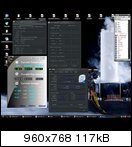ok i'm confused by all off this, to much info to take in. running my e8200 o/clocked to 3.8ghz vcore 1.3625,
your real temp is saying cores are 31c 25c, while core temp is 41c 35c, 10degrees is alot. so do i need to adjust any settings like -- or ++
confused!!




 Reply With Quote
Reply With Quote

 BIOSTAR TPOWER I45 UNOFFICIAL THREAD
BIOSTAR TPOWER I45 UNOFFICIAL THREAD







































Bookmarks